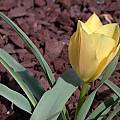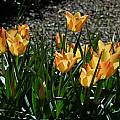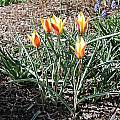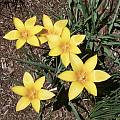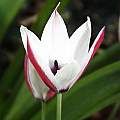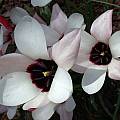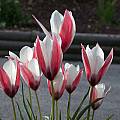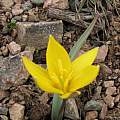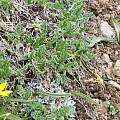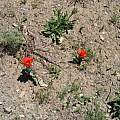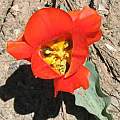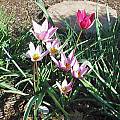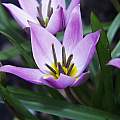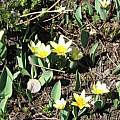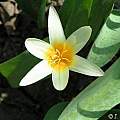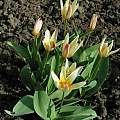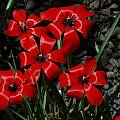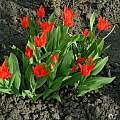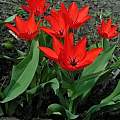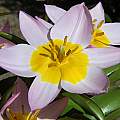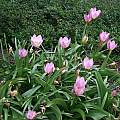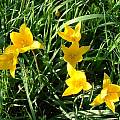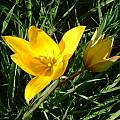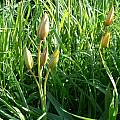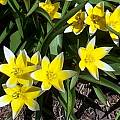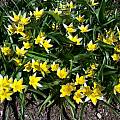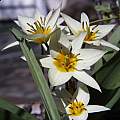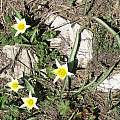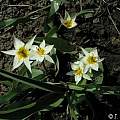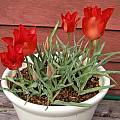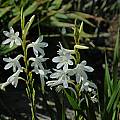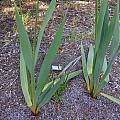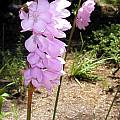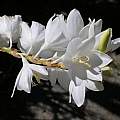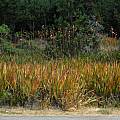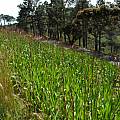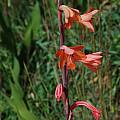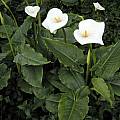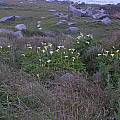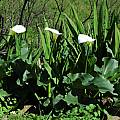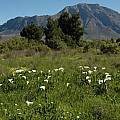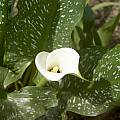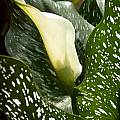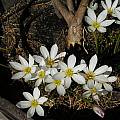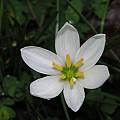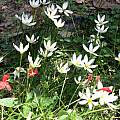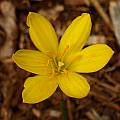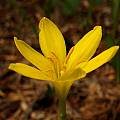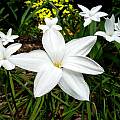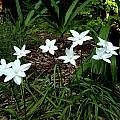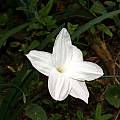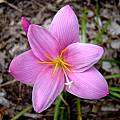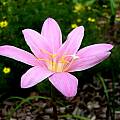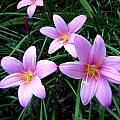On the legacy bulb wiki pages Kathleen Sayce reviews bulbs that outlast their gardeners, with some hints as to why. Suggestions came from PBS list members, review of world weed lists, USDA PLANTS National Database, Flora of North America, and some university databases. For more information consult Legacy Bulbs Index and Introduction.
Information about Trillium and species of other genera though Zephyranthes can be found on this wiki page. Information about other species is found on the pages linked below:
Albuca through Amaryllis - Anemone through Chionodoxa - Colchicum through Erythronium - Ficaria through Hyacinthus - Ipheion through Iris - Ixia through Lycoris - Merendera through Nerine - Ornithogalum through Sternbergia
Trillium is a genus of 40-50 species native to North America. Species easily persist in shady woodland gardens long after planting, where growing conditions are suitable, and across a wide range of zones. For success, pick species that grow naturally in a climate that matches yours, and provide woodland growing conditions.
Tristagma uniflorum see Ipheion uniflorum
Tulipa is a large genus of about 150 species, native to Eurasia and North Africa. Tulips tend not to persist for more than a few decades after a garden’s decline because they lack toxins that make many other bulbs unpalatable. Squirrels and mice are known to eat tulips. Nonetheless, several species tulips naturalize in gardens and may outlast their gardeners, where hybrids quickly vanish. This is due in part to seed set, which allows species to move around a bit, perhaps finding optimal spots in which to grow. Hardiness varies by species; cultivars are typically hardy in WHZ 6-9.
Tulipa batalinii is an old name for the yellow-flowered form of Tulipa linifolia.
Tulipa chrysantha was a name originally given to yellow forms of Tulipa montana, and subsequently used for yellow forms of T. clusiana, under which bulbs are sometimes still sold.
Tulipa clusiana, lady tulip, is native to eastern Europe and Asia, and has naturalized in California. Native to areas with summer drought, it seems to appreciate a sunny summer location where bulbs can bake in dry well-drained soil; WHZ 3-8. It has been in cultivation for hundreds of years.
Tulipa dasystemon is native to the Tien Shan and Pamir Altai, and east into northwestern China at high elevations.
Tulipa gesneriana, Didier’s tulip, has been noted from Ohio and Massachusetts. Its origins are unknown; it is probably from western or central Asia. Tulips attributed to this species in Europe are probably clones.
Tulipa greigii, native to Turkestan and central Asia, seems to prefer a dry summer location where bulbs can bake during dormancy; WHZ 5-8.
Tulipa humilis is from western to central Asia, and does well with some summer moisture.
Tulipa kaufmanniana, waterlily tulip; WHZ 3-8; is from the western Tien Shan.
Tulipa linifolia, WHZ 5-9, was originally from the Pamir Altai in Tajikistan.
Tulipa praestans, WHZ 5-9, is from the southern Pamir Altai in Tajikistan.
Tulipa saxatilis, candida tulip, is native to Crete, Rhodes and southern Turkey; like many other Mediterranean bulbs, it prefers dry summers in well-drained soils; WHZ 6-8. It has been in cultivation for centuries. It needs a hot sunny position and dry summer soil. Tulipa saxatilis ssp bakeri is native to Crete; the form 'Lilac Wonder' is most often seen in cultivation.
Tulipa sylvestris, wild tulip, like other partially rhizomatous tulips, naturalizes in woodland sites. It has been noted in states and provinces around the Great Lakes in PLANTS database. Expect it to persist widely in gardens; WHZ 3-8. It is native to Europe.
Tulipa tarda, WHZ 5-9, grows on rocky slopes in the Tien Shan, and is late to flower compared to other species in the genus.
Tulipa turkestanica, WHZ 5-9, grows in the Tien Shan and Pamir Altai.
Tulipa vvedenskyi; WHZ 3-9, grows in the western Tien Shan.
Watsonia is a South African genus. Plants are either winter growing and flowering, or summer growing and flowering; WHZ 8-10. Several are considered noxious weeds.
Watsonia borbonica, Cape bugle-lily, thrives in Hawaiian gardens and has naturalized.
Watsonia marginata, fragrant bugle-lily, is a garden waif along the south coast of California.
Watsonia meriana var. bulbillifera, bulbil bugle-lily, has naturalized along the north coast of California. It reproduces in part via bulbils, hence its improved success in spreading out of gardens.
Zantedeschia is native to southern Africa. A stately arum lily, it has been grown as an ornamental for several hundred years. Two species are in the PLANTS database as naturalized; WHZ 8-11.
Zantedeschia aethiopica, calla lily, has been reported from Oregon and California, and Australia; it is widely grown in the British Isles. Despite the name, it is native to southern Africa. Expect it in other states, in wet locations and mild winters.
Zantedeschia albomaculata, spotted calla lily, has been reported from Pennsylvania.
Zephyranthes, rain lilies, were mentioned repeatedly by southeastern gardeners. No surprise, this genus is native to southern North America, into Mexico and South America. Garden plantings across the south naturalize easily and persist for decades. Species mentioned by PBS members as easy to naturalize in gardens, and persisting with little to no care, include:
Zephyranthes drummondii, syn. Cooperia pedunculata
Species listed on other legacy bulb pages can be found alphabetically by clicking on the links below or by going to the index and introduction page where they will be listed in a table.
Albuca through Amaryllis - Anemone through Chionodoxa - Colchicum through Erythronium - Ficaria through Hyacinthus - Ipheion through Iris - Ixia through Lycoris - Merendera through Nerine - Ornithogalum through Sternbergia - Legacy Bulbs Index and Introduction
